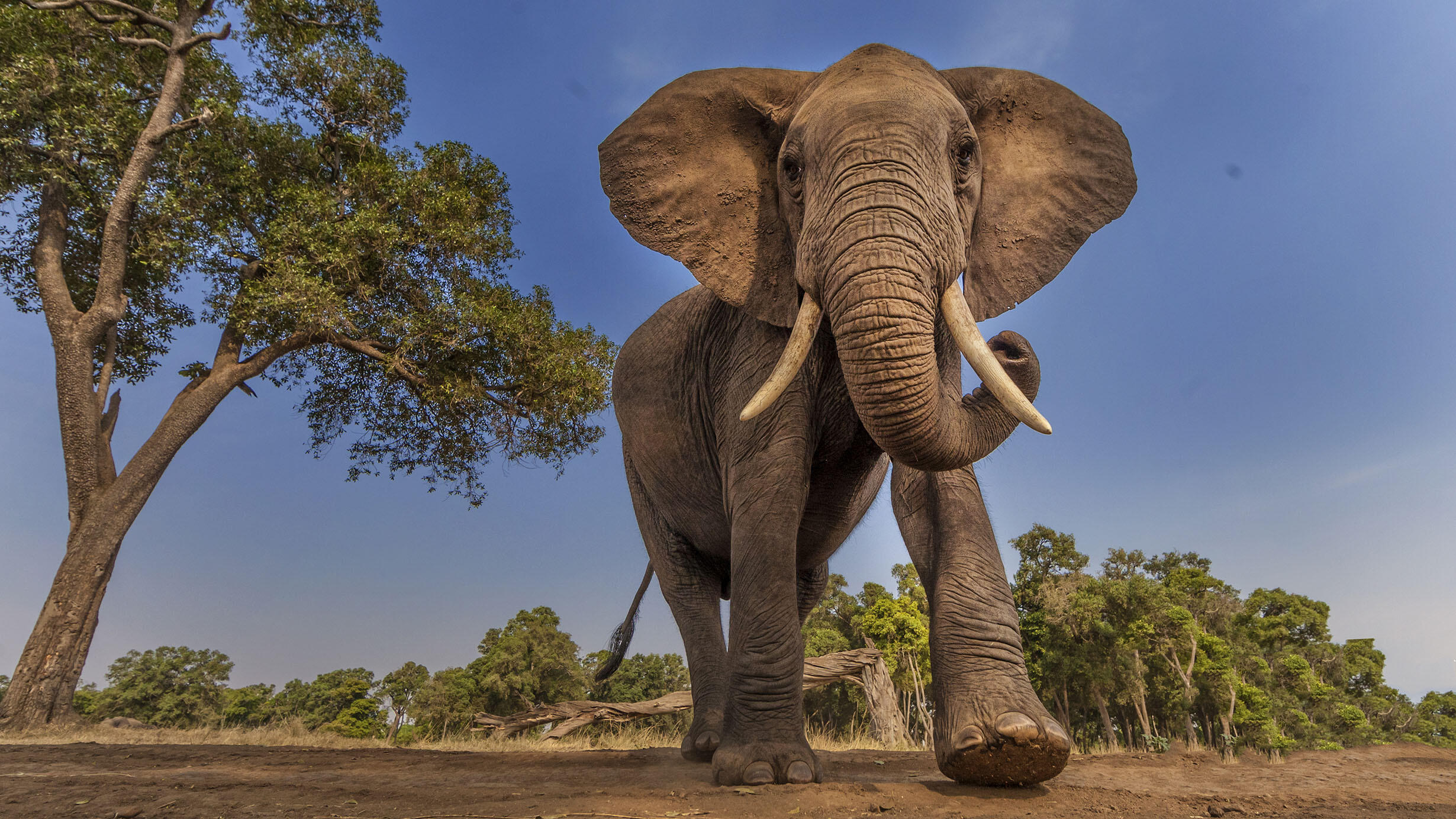AMNH Announces The Secret World of Elephants
 Manoj Shah/Getty Images
Manoj Shah/Getty Images How do elephants “hear” with their feet, use the 40,000 muscles in their trunks, or reshape the forests and savannas they live in, creating an environment upon which many other species rely? The Secret World of Elephants, a special exhibition opening at the American Museum of Natural History this fall, reveals new science about both modern and ancient elephants—including the titans of the Ice Age, mammoths and mastodons—and highlights elephants’ extraordinary minds and senses, why they're essential to the health of their ecosystems, and inspiring efforts to overcome threats to their survival.
“Elephants are not only majestic and incredible animals, they are pillars of their ecosystems, playing a vital role in the intricate tapestry of life on our planet,” said Museum President Sean M. Decatur. “We hope this exhibition reminds visitors of our shared responsibility to protect and preserve Earth’s magnificent diversity.”
According to fossil evidence, the larger group to which proboscideans (elephants and their close relatives) belong arose not long after the extinction of non-avian dinosaurs, about 60 million years ago. Since then, more than 200 species of proboscideans evolved, living on every continent except for Antarctica and Australia. During the Ice Ages, between 1.8 million and 11,700 years ago, more than 50 different elephant relatives still roamed the globe—including mammoths and mastodons—but by the end of that period, extinctions had wiped out most giant mammals across the world. In The Secret World of Elephants, visitors will be introduced to the greater elephant family tree, from the iconic woolly mammoth to the dwarf elephant Palaeoloxodon falconeri, which lived in what is now Sicily and was only about 4 feet tall at its shoulders, as well as to the three modern elephant species that share our planet today and the new science that is revealing more about their amazing anatomy and complex behavior.
Several life-size models, as well as fossils and casts, will illustrate elephants’ size, and videos and interactive exhibits will introduce visitors to these massive mammals’ incredible abilities. Elephants’ trunks, for example, are strong enough to pull down a tree, yet nimble enough to pluck a single blade of grass. They form close social bonds, recognizing each others’ voices, and are known to care for ill individuals and to visit the spot where a family member died. They are ingenious problem-solvers and, by eating, bulldozing, and trampling plants, digging water holes, and transporting seeds, they act as ecosystem engineers and affect hundreds of other species. Over the centuries that humans and elephants have lived together, often uneasily, elephants have been trained for war and work—and have come to represent powerful religious and political symbols across cultures.
Highlights of the exhibition include:
- a full-scale model of a woolly mammoth, depicted in the process of shedding its winter coat
- an interactive exhibit that demonstrates how elephants use extremely low sound waves—called infrasound—to send messages through the ground and to other elephants’ feet, which conduct vibrations up their legs and to their brains
- a life-size African elephant model with a projection on one side of its body showing the skeleton of this massive mammal and providing an inside look at how it processes the huge amount of food it eats—between 300-500 pounds per day—and at elephant gestation, which can last for nearly two years, longer than any other living mammal
- a life-size model of the extinct dwarf elephant with a dwarf elephant calf
- touchable teeth of an elephant, a mammoth, and a gomphothere (a distant elephant relative that became extinct around the end of the Ice Age and was the only proboscidean to reach South America)
- an interactive exhibit about elephant vocalization, which lets visitors listen to different elephant calls, each with its own meaning
- conservation-themed interactive exhibits that examine the impact of killing elephants for ivory, how climate change is affecting elephants, and ways that humans and elephants can share the planet and reduce human and elephant conflict
The Secret World of Elephants will open to the public on Monday, November 13, 2023. Museum Members will be able to preview the exhibition starting on Friday, November 10, through Sunday, November 12.
The exhibition is curated by Ross MacPhee, curator emeritus in the Museum’s Department of Mammalogy, with consultation by Raman Sukumar, honorary professor at the Centre for Ecological Sciences, Indian Institute of Science; and Alexandra van der Geer, a researcher at the University of Leiden, Netherlands.